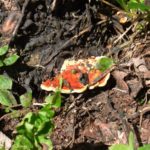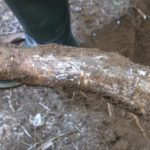Bridgestone announced recently it has established a groundbreaking technique that can be used to easily, quickly, and accurately diagnose white root rot disease*1 in para rubber trees, which are the primary source for natural rubber used in tires and other rubber applications. With the establishment of this technique, Bridgestone is supporting to conserve para rubber trees and contribute to a more stable supply of natural rubber as worldwide demand continues to increase.
With the increasing world population and the proliferation of motorized vehicles, the need for tires is expected to continue to expand in the future. Accordingly, the amount of natural rubber consumed is also expected to increase. In Southeast Asia, where more than 90% of the world’s natural rubber is grown, white root rot disease continues to spread due to pathogens in the soil. Since currently white root rot disease can only be identified by visual inspection, detection accuracy is low. Visual inspections can only be performed by digging into the soil around the tree. The complexity is time-consuming and often leads to late detections and misdiagnoses, causing damage from the disease to spread.
To respond to this issue, Bridgestone has been cooperating since 2010 with the Indonesian Agency for the Assessment and Application of Technology and numerous universities to promote development of technologies that diagnosis white root rot disease in a prompt manner.
Bridgestone has now established the LAMP Method*2, a diagnosis technique that utilizes biotechnologies. The company has developed a reagent kit based on the genetic structure of the disease-causing pathogens. The LAMP Method is a groundbreaking and advanced technique that can confirm the presence of the pathogen in the field easily, without the use of special equipment. With the LAMP Method, the early detection of white root rot disease is now possible, and it is anticipated that this technique will help control the spread of the disease from infected trees to healthy ones. In addition, by expanding this technique, which can be utilized regardless of knowledge and experience, damage control and maintenance can be performed easily. In this way, the LAMP Method is expected to have an enormous effect in terms of plantation management as well.
Going forward, Bridgestone will continue to cooperate with universities in both Indonesia and Japan to further reinforce and promote the development of technologies to improve natural rubber production. At the same time, through the widespread use of these technologies, the Company will contribute to the conservation of para rubber trees and the stable supply of natural rubber.
Through various R&D activities for raw materials, including the development of technologies—such as the LAMP Method—to improve natural rubber production, Bridgestone will aim to make raw materials for tires 100% sustainable materials*3 by 2050.
*1 White root rot disease is a disease caused by Rigidoporus microporus, a type of filamentous fungi that affects para rubber trees. By infecting the root and destroying its system, the disease causes the para rubber tree to wither. Early detection of the disease is difficult, and there is currently no fundamental countermeasure for the disease. When an outbreak occurs, the diseased area of the tree is cut off and treated with drugs. Rhizomorphs and fruiting bodies (mushrooms) appear on the infected areas of the tree, similar to the pictures below.
*2 The LAMP (Loop-Mediated Isothermal Amplification) Method is a gene amplification technique developed by EIKEN CHEMICAL CO., LTD. The technique amplifies specific DNA arrangements of pathogens in the soil to detect their presence.
*3 The Bridgestone Group positions “sustainable materials” as materials that are derived from renewable resources, can be used as part of the Bridgestone Group’s business over the long-term, and have a low environmental and social impact across the entire lifecycle, from raw material procurement to final disposal.





